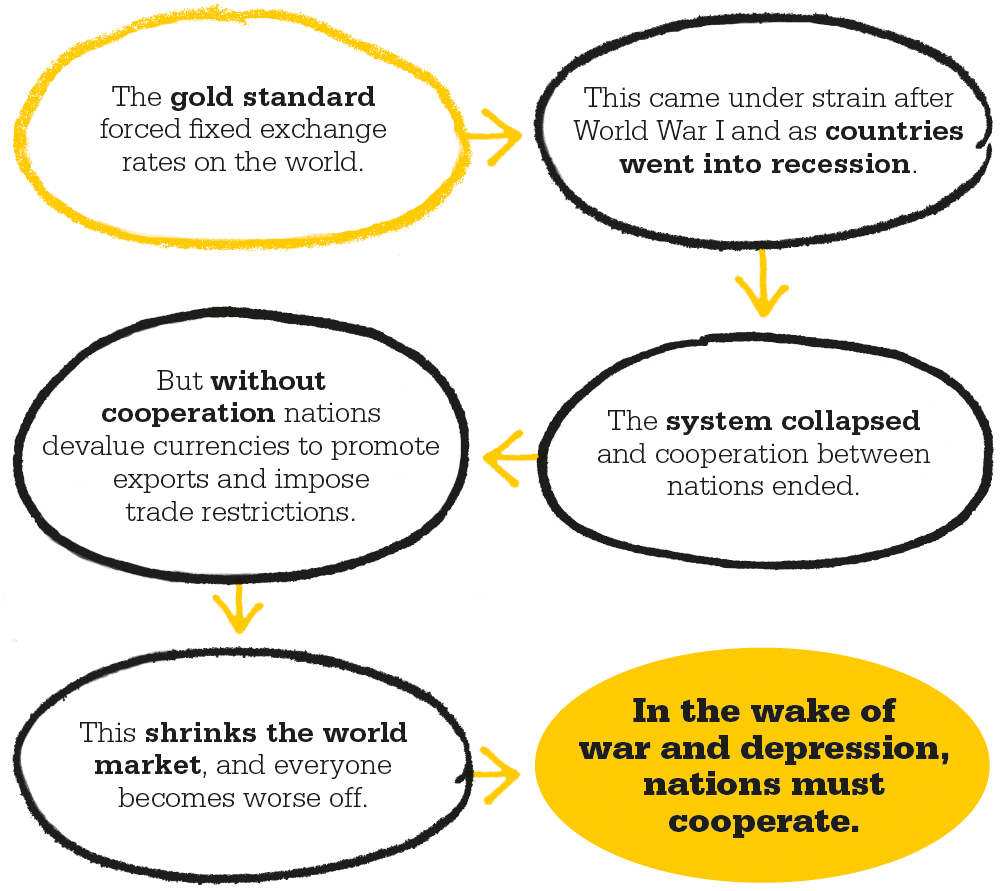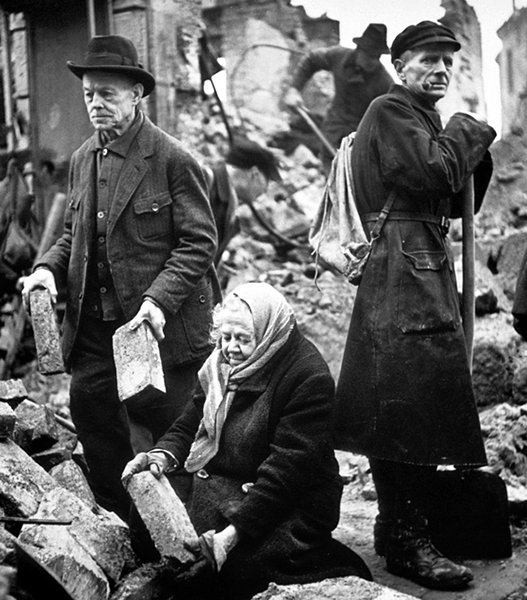

Global economy
The Bretton Woods agreements are signed in New Hampshire, in July 1944.
1930s The world economic system collapses during the Great Depression, and cooperation between economies breaks down.
1944 John Maynard Keynes publishes his plans for an “international currency union” to regulate world trade.
1971 President Nixon cuts the link between the dollar and the price of gold, ending the Bretton Woods system.
2009 The Bank of China says the dollar is unable to act as a credible reserve currency because of conflicts between the US’s domestic and international policies.
The gold standard was a monetary system that backed paper money with gold, thereby guaranteeing its value. It came into effect in Britain in 1821 and was adopted internationally in 1871.

The system provided a stable anchor for the international monetary system by fixing the exchange rates of various currencies relative to the price of gold. It also acted as a mechanism for making gold transfers between countries to reflect new balances of trade and capital flows. However, World War I placed exceptional demands on government financing, and the system began to break down.
Some countries suspended their gold standard membership to allow substantial borrowing and expenditure, often financed simply by printing money. The war’s end did not see a smooth return to the status quo—countries such as Germany had exhausted their gold reserves and could not return to membership, while other nations reentered the standard at wildly variable rates.
During the Great Depression of the 1930s nations left the gold standard in droves as they tried to expand their economies by devaluing their currencies to promote exports. At the same time international trade, which had been fairly unrestricted before the war, became subject to an increasing range of restrictions, as countries tried to maintain their position in a shrunken world market. These policies helped to prolong the Depression since each new restriction or devaluation further reduced the world market.
After World War II, the Allied powers turned to the question of post-war economic reconstruction. A conference was held in June, 1944, at Bretton Woods, New Hampshire, where delegates agreed to a US plan to peg currencies against the dollar. The dollar, in turn, was to be maintained by the US government at a fixed rate of exchange with the price of gold.
This system was overseen by a new International Monetary Fund (IMF), which would be responsible for providing emergency funding, while the International Bank for Reconstruction and Development (now part of the World Bank group) was established to provide funding for development projects. In 1947, a General Agreement on Tariffs and Trade (GATT) aimed to rebuild international trade. Together these new organizations sought to renew economic cooperation among nations, the lack of which had been so costly between the wars.
This system held for nearly 30 years of exceptional economic growth, but it was structurally flawed. Continuous US trade deficits (where imports exceed exports) helped keep the system working, but dollars flooded abroad until the stockpiles exceeded US gold reserves, pushing the price of gold in dollars above the fixed price of gold. As US government expenditure increased, the strain worsened. In 1971, President Nixon suspended the dollar–gold link, ending the Bretton Woods system.

Dresden was among countless cities in Europe and Asia destroyed during World War II. The International Bank for Reconstruction and Development was set up to fund reconstruction.

Traders watch as the crisis caused by the collapse of the Thai baht spreads across Asia in 1997. The Thais had given in to pressure from the IMF to float the baht.
Created by the Bretton Woods agreement, the International Monetary Fund (IMF) is today one of the world’s most controversial international bodies. It was established initially as an emergency fund for countries experiencing financial difficulties arising from balance of payments deficits, debt crises, or often both. More than 180 member countries contribute toward a central fund, depending on the size of their economy, and they can apply for cheap loans from that fund. When the Bretton Woods fixed-exchange system was abandoned in 1971, the IMF’s role changed. It began to impose strict conditions on its loans. Since the late 1970s these were heavily influenced by neoliberal ideas, which advocated privatization and cutting government spending. Economists have criticized the IMF for making crises worse, such as the East Asian crisis of the late 1990s.